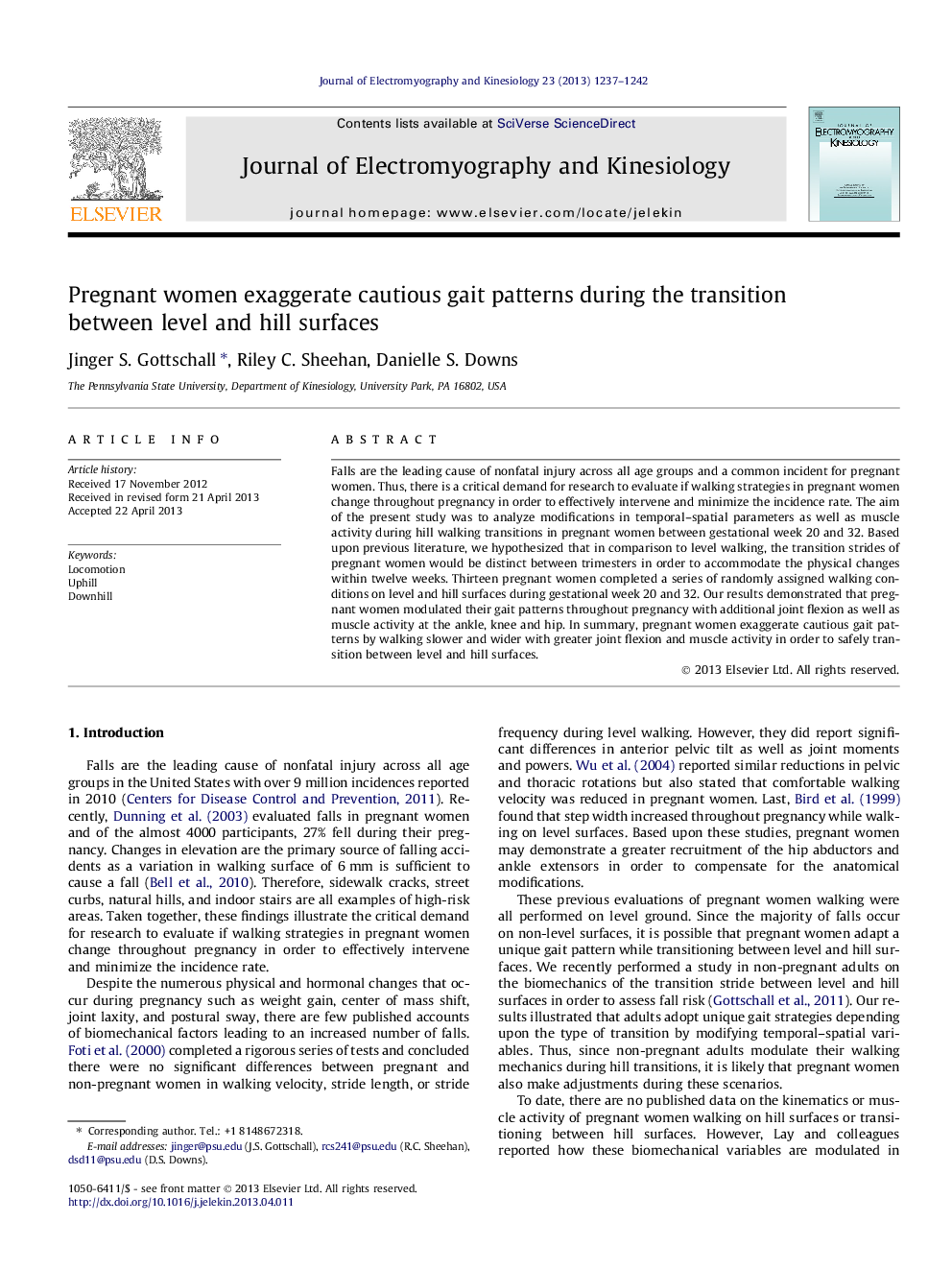| Article ID | Journal | Published Year | Pages | File Type |
|---|---|---|---|---|
| 6210578 | Journal of Electromyography and Kinesiology | 2013 | 6 Pages |
Falls are the leading cause of nonfatal injury across all age groups and a common incident for pregnant women. Thus, there is a critical demand for research to evaluate if walking strategies in pregnant women change throughout pregnancy in order to effectively intervene and minimize the incidence rate. The aim of the present study was to analyze modifications in temporal-spatial parameters as well as muscle activity during hill walking transitions in pregnant women between gestational week 20 and 32. Based upon previous literature, we hypothesized that in comparison to level walking, the transition strides of pregnant women would be distinct between trimesters in order to accommodate the physical changes within twelve weeks. Thirteen pregnant women completed a series of randomly assigned walking conditions on level and hill surfaces during gestational week 20 and 32. Our results demonstrated that pregnant women modulated their gait patterns throughout pregnancy with additional joint flexion as well as muscle activity at the ankle, knee and hip. In summary, pregnant women exaggerate cautious gait patterns by walking slower and wider with greater joint flexion and muscle activity in order to safely transition between level and hill surfaces.
